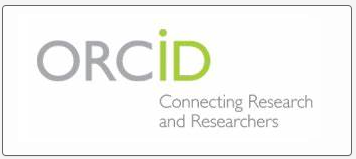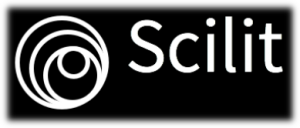ARMENIA'S ETHNIC CLEANSING POLICY AGAINST TURKIC-AZERBAIJANI PEOPLE
DOI:
https://doi.org/10.52340/isj.2022.25.02Keywords:
Armenian acts of vandalism, genocide, ethnic cleansingAbstract
The article "Armenia's ethnic cleansing policy against Turkic-Azerbaijani people" outlines Armenians' ethnic cleansing against the Turkic-Azerbaijani people in order to realize the dream of "Greater Armenia - from sea to sea". So, Armenians killed hundreds of thousands of Muslims in 1890-1892 in the Ottoman provinces of Zeytun and Sasun, in November 1894 in the cities of Adana, Marash, and Kayseri and surrounding villages, in 1904-1906 in Azerbaijan, and 1 million 600 thousand people in 1915 in Northern Anatolia, a total of 2.5 million Muslims were killed during the violent events of the early 20th century in the Ottoman Empire. If we include the 400,000 Muslims killed by Armenians in Azerbaijan and 10,000 in Georgia, the total number of Muslims killed by Armenians exceeds 3 million. Only 600,000 of the 3 million Turks that lived in the five Ottoman provinces of Trabzon, Erzurum, Erzincan, Van, and Bitlis survived after World War I. Armenian acts of vandalism were full of savage animal instincts. In January 1918, gangs of the Dashnaktsutyun Party gathered 1,400 children in the Katranli village of Kars and burned them alive. In March 1918, 200,000 people were murdered in Urmia and nearby areas, and more than 400,000 Azerbaijanis were killed by Armenians in Azerbaijan between 1917 and 1920. Armenians pushed people alive into water wells, burning tandoors, and oil wells, cut the bellies of pregnant women with bayonets, killed children with bayonets, nailed babies to the walls, tied women to their hair, and forced them to walk naked in the streets, raped women, young girls and older women, then gathered them all together in one house and burned them. Armenians hung men upside down, cut them in half with swords like in animal fights, crucified some on wooden beds, then covered them in carpets and rugs, and burned them alive. They hurled Muslim religious figures into the fires of the Koran, Islam's holy book, and burned them. The Armenian acts of vandalism knew no bounds. They severed people's hands and feet and forced them to eat their own flesh under a bayonet.
Downloads
References
March 1918 genocide against the Azerbaijani people. (2011). Collection of documents. In 3 volumes, II volume, 2nd book. Genocide in the Iravan province, 1918-1920. - Baku: "Chashyoglu". – 456 p.
Qasımlı, M.C. (2015). History of diplomacy of the Republic of Azerbaijan.// Foreign policy of the Republic of Azerbaijan (1991-2003): in 2 parts. Part I.- Baku: Mutarjim. –648 p.
State Statistical Committee of the Republic of Azerbaijan: Demographic indicators: Population of Azerbaijan. Archived 2012-06-26// https://web.archive.org/web/20120626200714/http://www.azstat.org/statinfo/demoqraphic/az/AP_/1_1.xls
Visit of President of Azerbaijan Ilham Aliyev to Strasbourg. (2004, May 1) // “Azerbaijan”.
Azerbaijan Democratic Republic. 1918-1920. (1998). –Baku: Gənclik.– 73 p.
Najafli, G. (2017). Genocide against Azerbaijanis in the Urmia region (1917-1918). (Based on ATASE documents). –Baku: “Elm” .– 112 p.
Gaziyev, Y. (2009). The Armenian issue. Lies and facts. Baku: Nurlar. – 344 p
Qasımlı, M. (2014). From "Armenian issue" to "Armenian genocide": in search of real history (1724-1920). -Baku: Mutarjim. – 468 p.
Mansurov, A.A. (1991). White spots of history and reconstruction. Baku: Yazıçı.– 224 p.
Musayev, İ. (1998). Political situation and policy of foreign countries in Nakhchivan and Zangazur regions of Azerbaijan (1917–1921). –Baku.– 385 p.
Nuriyeva, I.T. (2021). The ethnopolitical approach to the principles of territorial integrity and self-determination. Monograph.-Baku: Mutarjim. –pp. 352.
Nazim Mustafa. (2017). Genocide of Azerbaijanis in Iravan province (1918-1920). Baku: “Elm” .– 328 p.
Abishov, V. (2017). March 1918 genocide against the Azerbaijani people in Baku. Baku: “Elm” .– 220 p.
Abishov, V. (2017). Genocide against the Azerbaijani people in Shamakhi district. Baku: “Elm” .– 120 p.
Aliyev, I. (2000). Shusha. Baku: Renaissance - XXI century, No. 31.–p. 277.
Baberowski, I. (2010). The enemy is everywhere. Stalinism in the Caucasus. Moscow: ROSSPE.– 855 p.
Velichko, V.L. (1990). Caucasus. Russian business and tribal issues (Complete collection of journalistic works). T.I. St. Petersburg, 1904. Republished: Baku: Elm.– 224 p.
Guliev, A. (2000). True genocide and its victims // Vozhrozhdenie-XXI century, No. 4 (26).
"Zerkalo". (March 17, 2001). No. 52.
History is the cause of Armenian terrorism. L. Mikuchadze's list. (October 23, 2002). "Echo".
Kachaznuni, O. (1990). Dashnaktsutyun has nothing else to do! Bucharest, 1923. Baku: Elm.–89 p.
Lalayan, A. (1936). "Revolutionary East". No. 2-3.
Maccartley, J. & K. (1996). Turks and Armenians. Baku: Azerneshr. - 158 p.
Crimes of Armenian terrorist and bandit formations against humanity (XIX-XXI centuries) (2002). Brief Chronological Encyclopedia. Institute for Human Rights of the National Academy of Sciences of Azerbaijan. Baku: Elm. –154 pp.
Decree of H. Aliyev “on the genocide of Azerbaijanis” dated March 26, 1998 // Baku Worker, 1998, March 26.
Georges de Maleville La Tragedie Armenienne de 1915. (1988).– 117 p.
Kirzioglu, F. (1970). Armenian atrocities in and around Kars province.
ARPİİSSA, F.276, list 2, work 20, v. 18-19
ARDA, f. 894, list 10, work 80, v. 49-56
ARDA, fund 970, list 1, work 1, v. 28-29
Archive of Political Documents of the Office of the President of the Republic of Azerbaijan (APD UDP AR), f. 276, op. 8, d. 259, l. 97.
State Historical Archive of the Republic of Azerbaijan (GIA AR), f. 524, op. 8, d. 5, l. 27.
State Archive of the Republic of Azerbaijan (GA AR), f. 970, op. 1, unit ridge 1, l. 51.
State Archive of the Republic of Azerbaijan (GA AR), f. 970, op. 1, unit ridge 166, l. 8.
Newspaper. ECHO/internet edition http://www.echo-az.com/archive/ 180/facts.shtml
Jabrailov, R. (2005). International law, or "the law of the strong." Nagorno-Karabakh conflict: A collection of full-text electronic materials. Baku. – 381 p. p. 260//http://files.preslib.az/site/karabakh/gl1.pdf










